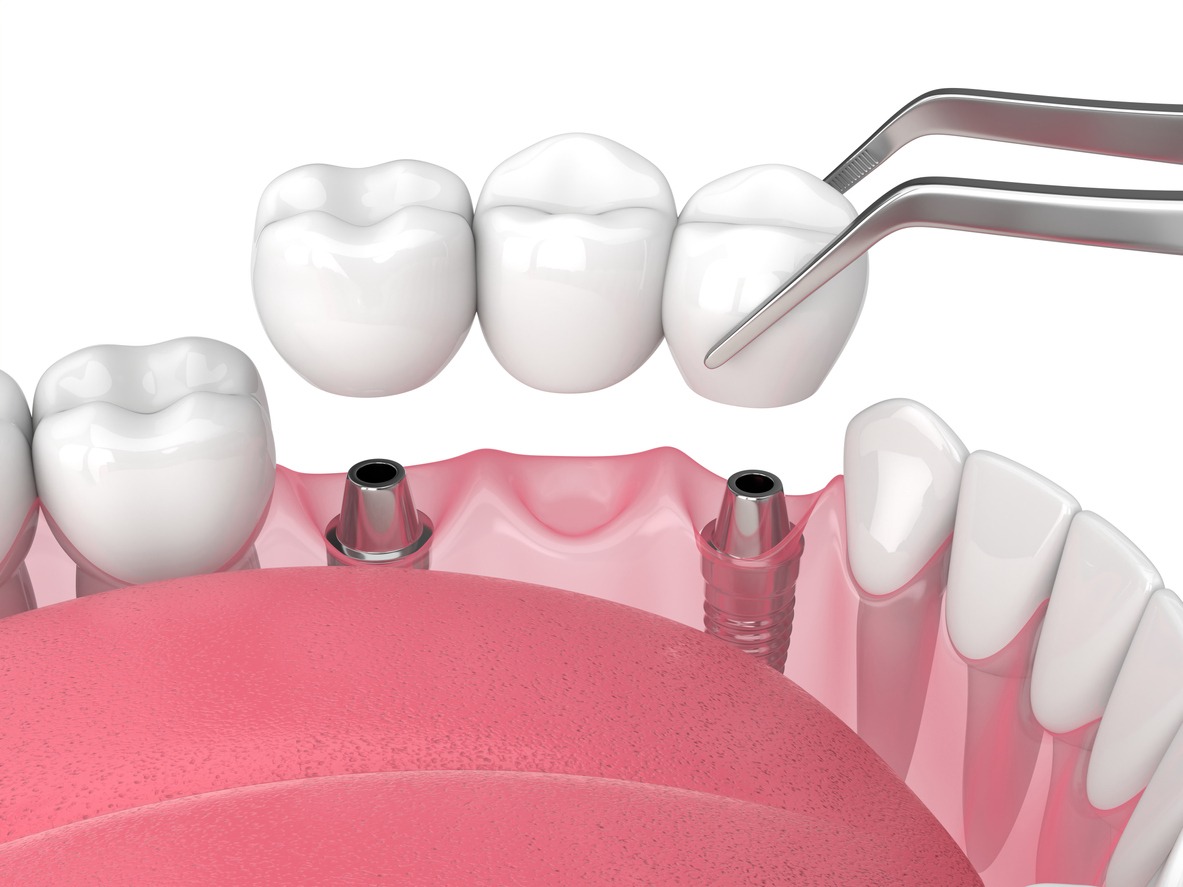Dental implants offer a powerful solution for individuals facing the challenge of having missing teeth. A key component of any dental implant is the Pontic. Its the most visible aspect of the implant process. Its important to understand the options available as you consider getting a dental implant procedure done.
Overview of the Different Types of Pontics
Pontics, the artificial teeth used in dental bridges to fill the gap left by missing natural teeth, come in various types, each tailored to specific clinical situations and patient preferences. The choice of pontic type depends on factors such as the location of the missing tooth, the condition of the surrounding teeth, and aesthetic considerations. Here are some common types of pontics:
- Conventional Pontic: The conventional pontic is a standard artificial tooth used in traditional dental bridges. It has a smooth, contoured appearance and is effective for replacing a single missing tooth. While it serves its functional purpose well, some patients may find its appearance less natural compared to other pontic types.
- Ridge Lap Pontic: Ridge lap pontics are designed with a slight indentation or concavity on the side that faces the gum ridge. This design helps in achieving better aesthetics by mimicking the natural contours of the gum tissue. Ridge lap pontics are often preferred for their ability to create a seamless transition between the artificial tooth and the gums.
- Modified Ridge Lap Pontic: This pontic type builds upon the ridge lap design by incorporating additional modifications to enhance aesthetics. The modified ridge lap pontic may feature scalloped edges or other adjustments to mimic the natural irregularities found in the gum tissue, creating a more lifelike appearance.
- Ovate Pontic: Ovate pontics are crafted with an ovate or egg-shaped base that imitates the natural tooth socket. This design is particularly suitable for replacing front teeth, providing a natural emergence profile and enhanced aesthetics. The ovate pontic helps maintain the illusion of a tooth emerging from the gum tissue.
- Maryland Bridge Pontic: Specifically used in Maryland bridges, this type of pontic is attached to a metal or porcelain framework with wings on either side. The wings are then bonded to the adjacent teeth, eliminating the need for traditional crowns. Maryland bridge pontics are often employed for replacing front teeth.
- Hybrid Pontic: Hybrid pontics combine elements of different pontic types to address specific clinical requirements. For example, a hybrid pontic may incorporate the ovate design for enhanced aesthetics while also featuring ridge lap characteristics. This versatility allows for a customized approach to meet the unique needs of each patient.
- Telescopic Pontic: Telescopic pontics are designed with a hollow portion underneath, allowing for the insertion of a metal or ceramic rod into the root canal of an adjacent tooth. This design provides additional support and stability, making telescopic pontics suitable for certain clinical scenarios.
- Cantilever Pontic: Cantilever pontics are utilized in cantilever bridges where only one adjacent tooth is available for support. These pontics are connected to the bridge structure on one side, providing a solution for cases where a missing tooth has no adjacent tooth on one side.
Overview of Materials Used in Pontics
Dental technology has advanced significantly, providing a range of materials for crafting pontics, the artificial teeth used in dental bridges. The choice of pontic material depends on factors such as the patient’s aesthetic preferences, functional requirements, and the specific characteristics of the dental restoration. Here are some common materials used for pontics:
- Porcelain-Fused-to-Metal (PFM): PFM pontics combine the strength of a metal substructure with the aesthetics of porcelain. The metal base provides durability and support, while the porcelain overlay mimics the appearance of natural teeth. PFM pontics are known for their strength and natural-looking aesthetics.
- All-Porcelain or All-Ceramic: All-porcelain or all-ceramic pontics are crafted entirely from ceramic materials, such as zirconia or lithium disilicate. These pontics offer excellent aesthetic qualities, closely resembling the translucency and color variations of natural teeth. All-ceramic restorations are often preferred for their biocompatibility and minimal allergic reactions.
- Metal-Free Materials: Advances in dental materials have led to the development of metal-free options for pontics. Materials like zirconia and high-strength ceramics provide strength and durability without the use of metal. Metal-free pontics are particularly appealing for patients with metal allergies or those seeking restorations with a more natural appearance.
- Gold Alloys: Gold alloys are occasionally used for pontics, especially in cases where strength and durability are paramount. While gold is not tooth-colored, its biocompatibility and longevity make it a reliable choice for certain clinical situations. Gold alloys are often utilized for posterior teeth where aesthetics may be less critical.
- Composite Resin: Composite resin pontics are made from a tooth-colored plastic material that can be customized to match the shade of the surrounding natural teeth. While not as durable as some other materials, composite resin pontics are a more cost-effective option and can provide satisfactory aesthetic results.
- Acrylic: Acrylic pontics are another economical choice, often used in temporary or provisional bridges. While acrylic is not as durable as other materials, it serves a temporary purpose during the healing phase or while waiting for a permanent restoration.
- Titanium: Titanium pontics are lightweight and biocompatible. While not commonly used for the visible parts of the pontic due to its metallic appearance, titanium may be employed in the substructure of certain restorations, providing strength and support.
- Hybrid Materials: Some pontics may be crafted using hybrid materials, combining the advantages of different substances. For example, a pontic may feature a zirconia substructure for strength and a ceramic overlay for optimal aesthetics.
Conclusion
The selection of the most appropriate pontic type and materials involves a thorough assessment by the dentist, considering factors such as the patient’s oral health, aesthetic preferences, and the specific requirements of the dental restoration. Other factors include taking into consideration the location of the missing tooth, the patient’s bite force, and budget constraint. Advances in dental materials continue to expand the array of options available, allowing for a more personalized and tailored approach to restorative dentistry.


